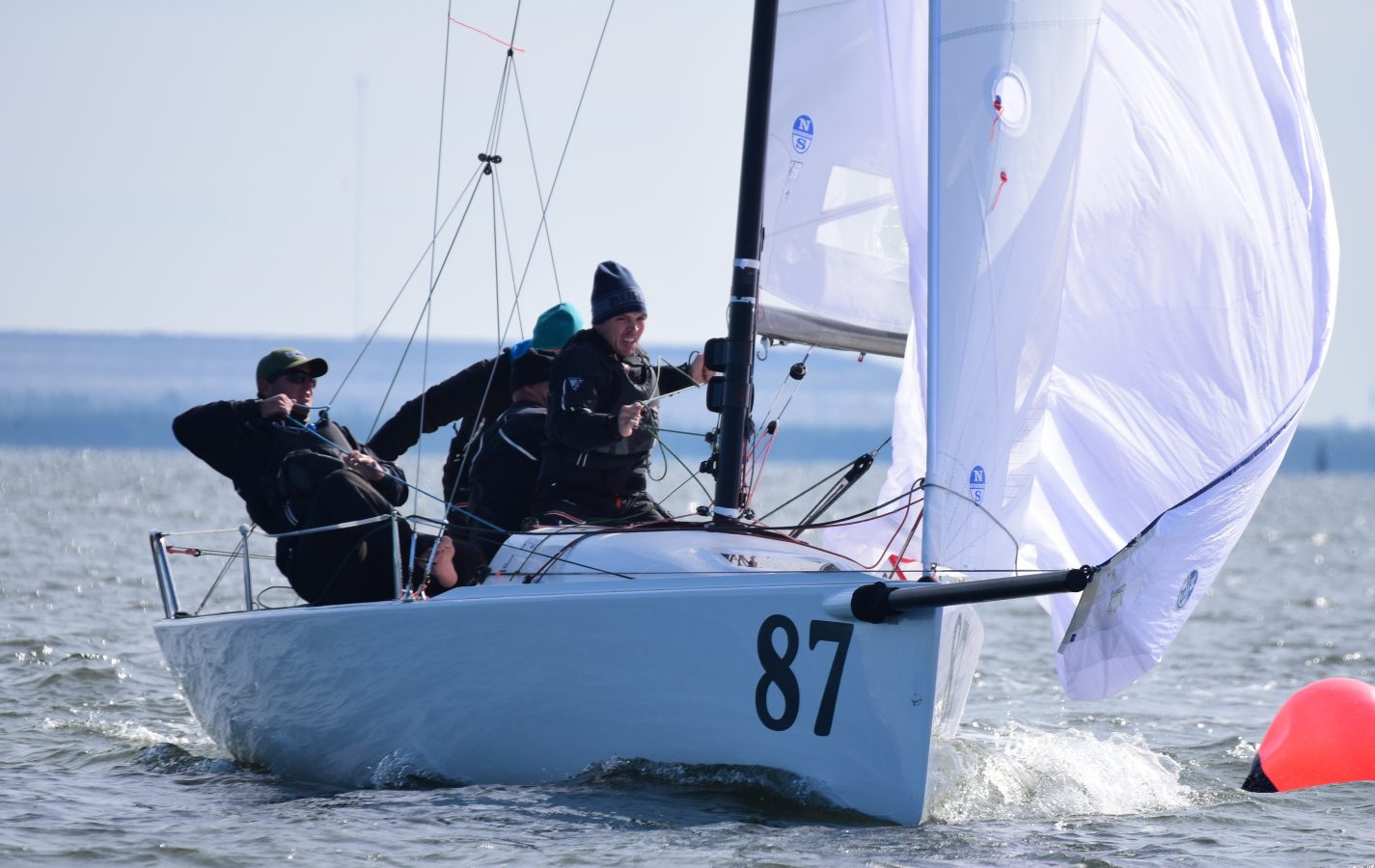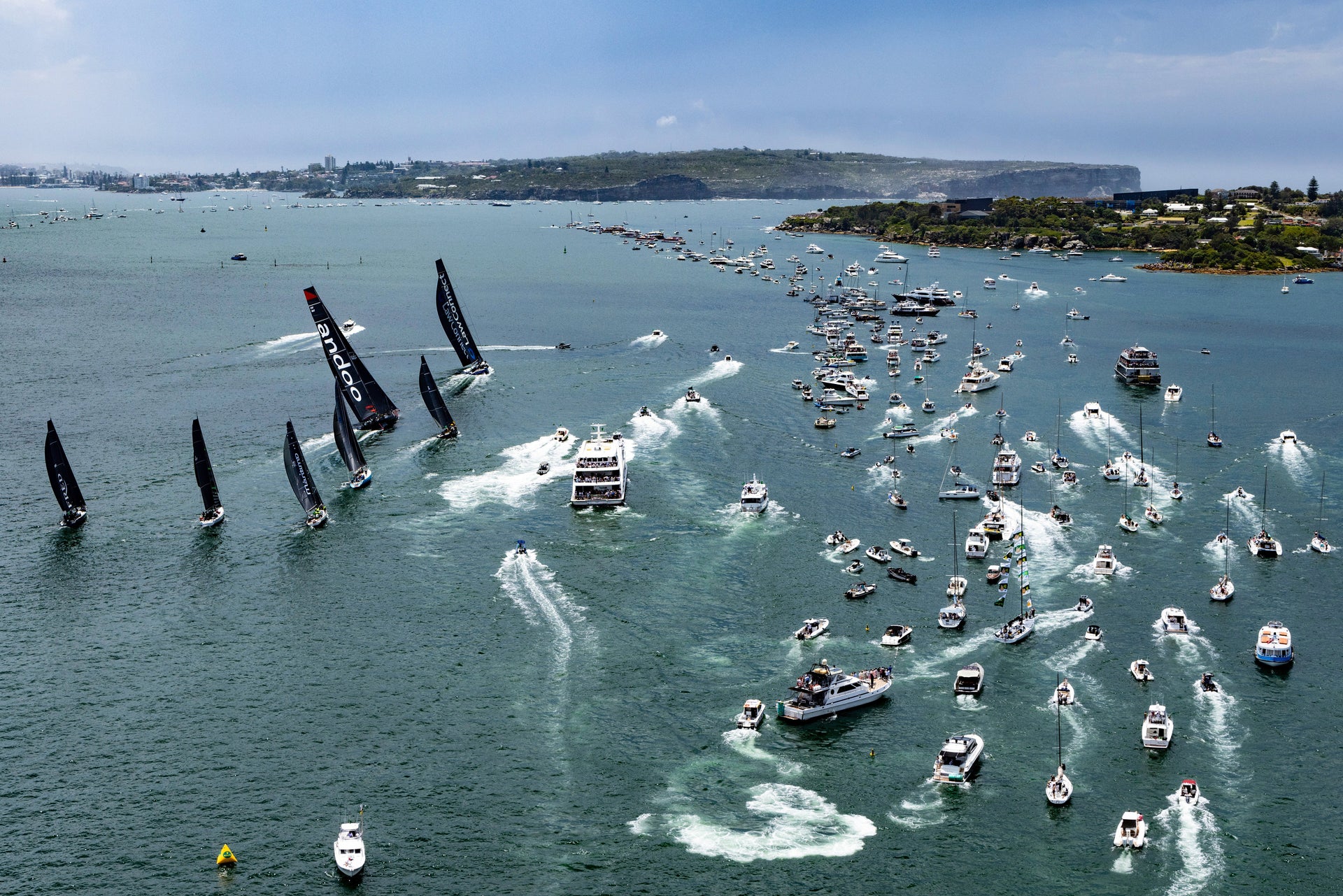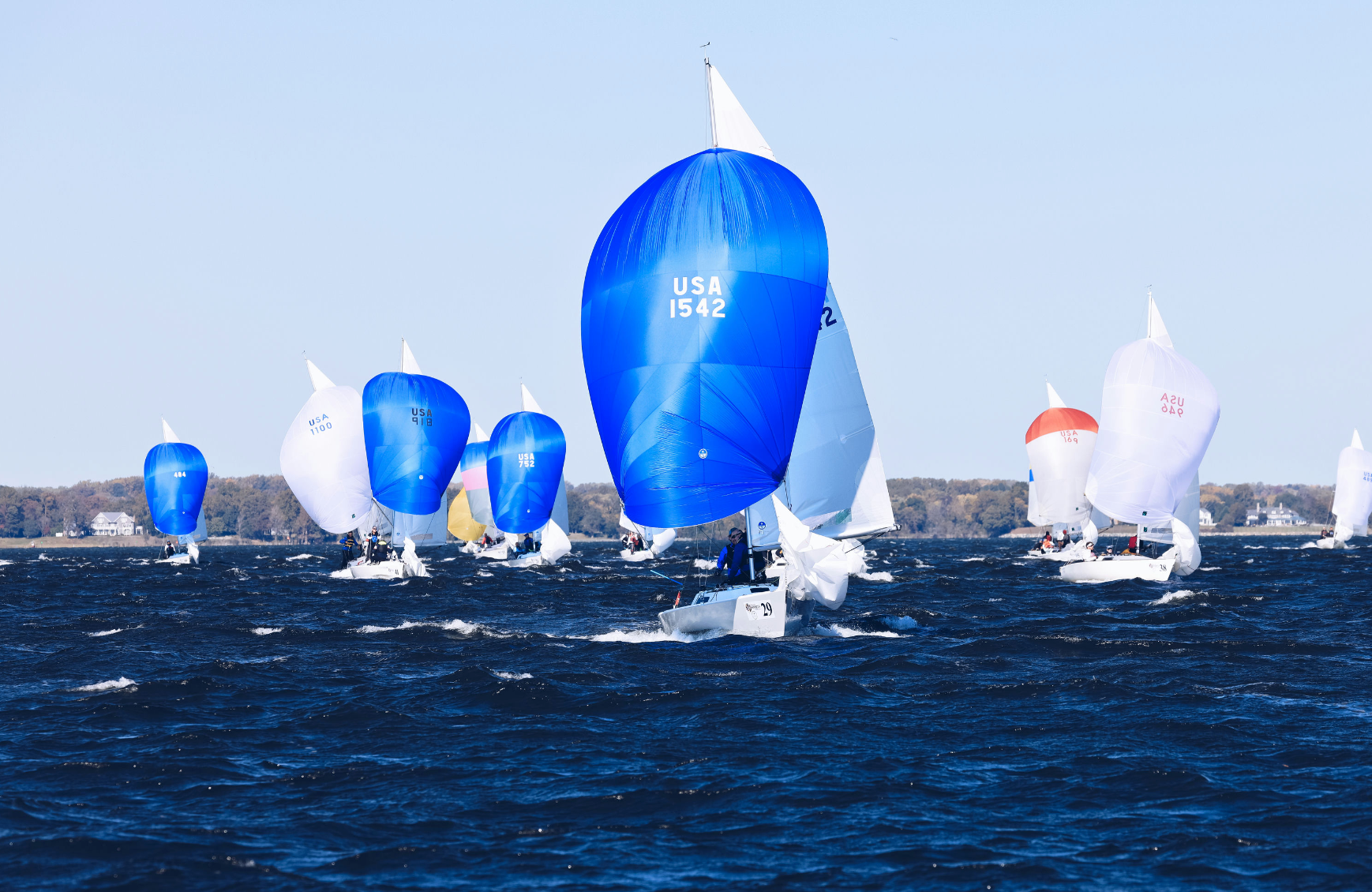J/70 DOWNWIND TIPS - MARGINAL PLANING CONDITIONS
J/70 WINTER SERIES EVENT #2
Tips for Marginal Planing Conditions

The J/70 Class came back for the action at event #2 of the Davis Island Winter Series in Tampa, Florida. Starting the event off with a bullet, Joel Ronning’s Catapult was ready to take on the 52-boat fleet. A cold front kept things on the chilly side, but with a nice 12-18 knot breeze out of the NE and flat seas, ideal conditions for all teams would be presented for the weekend. The competition was as high as usual. Sailors were eager to get off the line in a clear lane so they could choose their own destiny. After six races, Catapult lived up to their name and stayed clear of the fleet, scoring a total of nine points after one discard. Still having no races out of the top five the entire weekend, they were untouchable and had unbelievable speed. The XCS-1 mainsail, the J-6 jib and AP-1 spinnaker was a common weapon of choice for J/70 teams this weekend, with outstanding results.
North powered clients to 1,3, 5*, 6,7,8*,9 overall, sweeping the fleet full storm. Congratulations to our clients for these outstanding performances throughout the weekend in shifty-puffy conditions.
As always, teams had their share of tricks to get them around the race course. North Sails Tim Healy joined John Heaton’s team Empeiria for the weekend and shared some tips with us afterward. Here is what he had to say about maximizing crew technique in flat water marginal planing conditions.
Tips for Marginal Planing Conditions in 14-16 knots, flat water
At the top of the beat it is important to recognize what side of the course has best pressure.
Plan A: If no jibe is the call, then complete a normal set and quickly determine if you are in a planing puff or not, keeping in mind that you still have to protect your lane to weather.
Plan B: If you decide on a quick jibe, set up on the offset leg so you won’t get overlapped to windward with any boat. It is also important to sail higher, early in the offset leg, so the spinnaker can be set before the offset mark and fill as early as possible. This will allow a jibe at the offset mark to ensure no one will jibe inside you.
If you are in a planing puff, leave the jib out. Once you get planing get more vang on to maximize your power by keeping the main leech from spilling open. You should notice your leech telltales starting to stall then ease off a bit. This will give more power once you are up on a plane, allow you to sail lower while planing and will keep you planing longer as the wind fades off.
Things to keep in mind on crew weight placement:
In marginal or ”lazy” planing conditions, keep crew weight forward. The three forward crew should only move fore and aft in the cockpit section in front of the winch. Helmsman should be hip up to winch to-two feet behind it. The less wind the farther forward the entire crew needs to move.
As your planing puff dies, turn up gradually to maintain power and heel angle. If puff continues to die and you need to start searching up for pressure/power, look upwind and determine if there is another puff coming quickly that you can connect with. If a puff is not coming your way, then quickly go into displacement mode.
- Furl jib
- Bear away to max downwind angle
- Ease main out and adjust vang for proper twist
- Weight in for a flat boat and weight max forward
- Make sure your backstay is fully eased
When your are in displacement mode, it might be a good time to think about going wing-on-wing. This will allow you to ride the 8-13 knot puff back down to the center of the course and away from the pack. It works well in these marginal planing conditions because it allows you to separate from other boats that may be searching too high to stay on a plane. You will be sailing close to DDW, while they are sailing high (on a reach) searching for the next planing puff. This is an opportunity to gain a lot of distance from your closest competitors.
Once the next puff is identified as a ‘planing puff’, wait until it hits then it’s time to take immediate action:
- Unfurl jib (under trim till planing to keep it from disturbing the air flow around spinnaker).
- Turn boat up to get planing at the same time all the crew weight is moved to the weather rail.
- Find the correct heading based on heel angle. No more than 12 degrees of heel when puff hits then less than 10 degrees to get planing. Keep in mind that a planing boat should be flat and have no more than 10 degrees of heel.
- Spin can be eased to see curl when puff first hits. When planing trim in to eliminate that curl. Only test curl from time to time. This keeps the spin leech from twisting too far open and depowering.
- Once planing, trim vang on and trim in the jib, being careful not to overtrim.
See you at the next regatta! Please do not hesitate to contact Tim or the North Sails J/70 experts with go fast questions or product information.
| J/70 2017-18 US Winter Series – Event 2 | ||
| 1 | Catapult / Joel Ronning | |
| 3 | Savasana / Brian Keane | |
| 5* | Powerplay Racing / Peter Cunningham | |
| 6 | Stampede / Bruno Pasquinelli | |
| 7 | Scamp / Will Welles | |
| 8* | Minor Threat / Jeff Janov | |
| 10 | Building A / Josh Goldman | |
| * Denotes Partial North Sails Inventory | ||





























